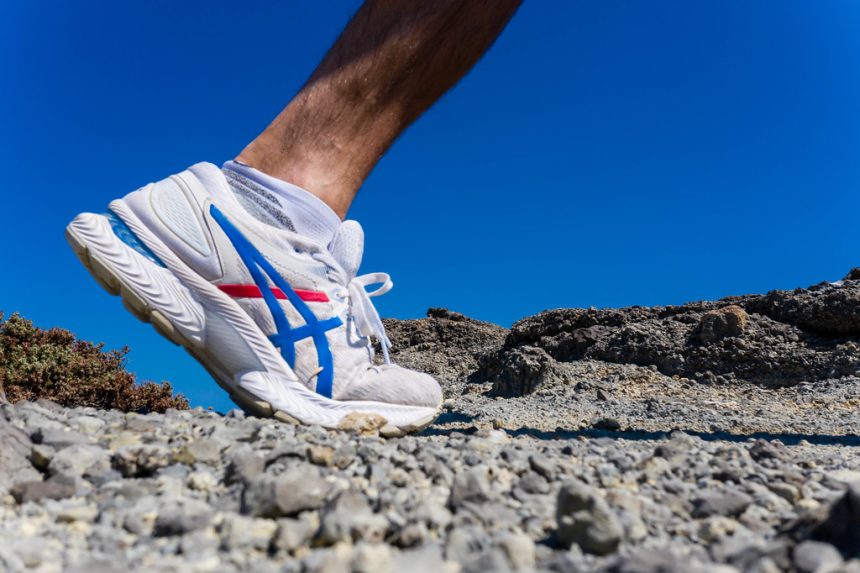Running is a fantastic way to stay fit, relieve stress, and enjoy the great outdoors. But whether you’re a seasoned marathoner or a beginner lacing up for the first time, selecting the right running shoes is crucial to ensure a comfortable and injury-free experience. In this article, we’ll guide you through the key factors to pay attention to when choosing running shoes.
1. Foot Type:
Understanding your foot type is the first step in finding the right running shoes. There are three basic foot types:
- Pronated: If your feet tend to roll inward when you run, you have pronated feet. Look for shoes with good arch support and motion control features to stabilize your gait.
- Supinated (Underpronated): Supinated feet roll outward, so you’ll want running shoes with extra cushioning to absorb shock and provide support.
- Neutral: Neutral feet maintain a healthy, balanced gait. You can wear a wide range of running shoe types, but stability shoes with moderate cushioning are often a good choice.
2. Shoe Type:
Running shoes come in different types, each designed for specific purposes:
- Road Running Shoes: Ideal for pavement and indoor tracks, these shoes offer a smooth ride with cushioning for shock absorption.
- Trail Running Shoes: Designed for off-road terrain, these shoes have rugged outsoles for better traction and protection against rocks and debris.
- Racing Shoes: These lightweight, minimalist shoes are designed for speed and are often used in competitions.
- Stability Shoes: Suitable for runners with pronated feet, these shoes provide added support to prevent overpronation.
- Cushioned Shoes: These offer extra padding for comfort, making them suitable for long-distance running.
3. Fit:
The fit of your running shoes is paramount. Here’s what to consider:
- Size: Ensure your shoes fit comfortably with a thumb’s width of space between your longest toe (usually the big toe) and the front of the shoe. Avoid shoes that are too tight, as they can lead to blisters and discomfort.
- Width: Make sure the shoe is wide enough to accommodate the width of your foot without feeling tight.
- Arch Support: The shoe should provide proper arch support for your foot type. This helps prevent conditions like plantar fasciitis and shin splints.
- Heel Fit: Your heel should fit snugly but not be overly tight. A secure heel fit prevents slipping and blisters.
4. Cushioning and Support:
The level of cushioning you need depends on your running style and the surface you run on. Cushioning absorbs shock, reduces impact, and provides comfort. Support features, such as medial posts or roll bars, can help with stability if you have pronated feet.
5. Drop or Heel-to-Toe Differential:
The drop is the difference in height between the heel and the forefoot. Different drops suit different running styles:
- Zero Drop: These shoes have minimal to no height difference between the heel and forefoot and promote a more natural running style.
- Low Drop: Suitable for runners transitioning to minimalist shoes, they offer a slight heel-to-toe drop.
- Standard Drop: Most running shoes have a 10-12mm drop, which suits many runners and running styles.
6. Try Before You Buy:
Never purchase running shoes without trying them on. Visit a specialty running store where experts can analyze your gait, measure your feet, and provide recommendations based on your unique needs.
7. Replace When Necessary:
Running shoes have a lifespan of around 300-500 miles (480-800 kilometers). Replace them when they show signs of wear and lack the cushioning and support they once had.
In conclusion, choosing the right running shoes is crucial for a comfortable and injury-free running experience. Understanding your foot type, selecting the appropriate shoe type, ensuring a proper fit, and considering factors like cushioning, support, and drop are all essential steps in finding the perfect pair. Invest time in research and trying on different options to discover the running shoes that will support you on your fitness journey.
Also learn about 10 Scenic Running Routes to Explore in Singapore: A Runner’s Guide.











